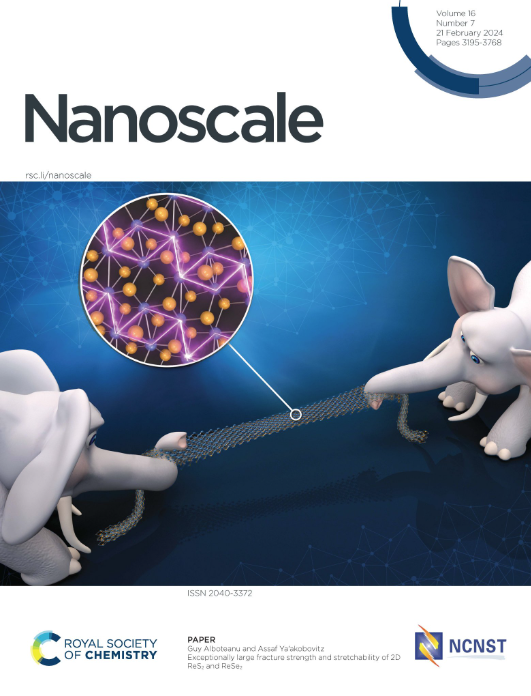Contrast-enhanced imaging of carbon fiber composites using hafnium oxide nanocrystals
IF 5.8
3区 材料科学
Q1 CHEMISTRY, MULTIDISCIPLINARY
引用次数: 0
Abstract
Carbon fiber-reinforced polymers (CFRPs) are of utmost importance in high-performance structural applications due to their unique combination of light-weight, yet high-strength behaviour. However, their behaviour and damage mechanisms are not fully understood. Damage propagation models need to take into account the type, geometry and orientation of a multitude of failure mechanisms and defects. Micro-Computed Tomography (micro-CT) data could provide the necessary input for these models, but the poor contrast between the carbon fibers and the polymer matrix does not allow automatic geometry extraction needed as input. To overcome this issue, hafnium oxide nanocrystals (HfO2 NCs) were introduced as CT contrast agents to the polymer matrix to provide the required contrast. To ensure a homogeneous and stable dispersion of the NCs in the epoxy resin, a bisphosphonic acid ligand consisting of ethylene glycol oligomer segments was used. The NCs did not significantly alter important parameters such as matrix stiffness, viscosity, glass transition temperature and curing time, enabling them to be implemented without having to alter current composite resin infusion methods. NC-doped CFRPs with 5 and 10 m% of HfO2 NCs added showed a drastic improvement in CT contrast, allowing for segmentation of the carbon fiber tows and visualization of micrometer-scale cracks. The contrast-enhanced NC-doped composites thereby enable the validation of damage models by accurate micro-CT data.

求助全文
约1分钟内获得全文
求助全文
来源期刊

Nanoscale
CHEMISTRY, MULTIDISCIPLINARY-NANOSCIENCE & NANOTECHNOLOGY
CiteScore
12.10
自引率
3.00%
发文量
1628
审稿时长
1.6 months
期刊介绍:
Nanoscale is a high-impact international journal, publishing high-quality research across nanoscience and nanotechnology. Nanoscale publishes a full mix of research articles on experimental and theoretical work, including reviews, communications, and full papers.Highly interdisciplinary, this journal appeals to scientists, researchers and professionals interested in nanoscience and nanotechnology, quantum materials and quantum technology, including the areas of physics, chemistry, biology, medicine, materials, energy/environment, information technology, detection science, healthcare and drug discovery, and electronics.
 求助内容:
求助内容: 应助结果提醒方式:
应助结果提醒方式:


